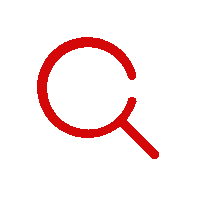
- Contact:Minister Xu
- Mobile:13841408476
- Tel:024-44837288
- Fax:024-44837004
- E-mail:xuming58@126.com
- Web:www.jinpiaoxiang.com
- Address:No.110 XiangHuai Road
Benxi Economic Development Zone
Liaoning Province
How Much Grease is Enough for Greasing Bearings?
06 Dec,2018

All of the formal training I've had on the application of lubricants suggests that for greasable bearings, one should never pump in so much grease as to push out the external seals. However, the instruction manual that comes with Dodge Type-E bearings states:
‘Operation in presence of dust, water or corrosive vapors - Under these conditions the bearing should contain as much grease as speed will permit, because a full bearing with consequent slight leakage is the best protection against entrance of foreign material.’
Won't this ruin the seal and allow for easier entrance of foreign material? I currently teach my technicians to add the amount of grease as determined by the SKF formula G = DB/10, where G is grease in ounces, D is bearing outer diameter, and B is bearing width; or as I've read in Lube-Tips, one shot per inch of shaft diameter. Is this not enough in dusty environments?"
Several factors influence the quantity of grease that would go into a bearing at the selected interval. Critical factors include:
1. Design of the bearing (plain, roller, ball or spherical roller).
2. Type of shield used in the bearing.
3. Size and speed from which to calculate dN values.
4. Viscosity of the lubricant in the grease.
The Dodge Type-E bearing has a shield and lip seal configuration, with an option for an additional two-stage lip seal. This type of seal, by design, will allow for discharge of grease without damage at the outer perimeter of the seal. You could consider this a type of shielded bearing configuration.
A sealed bearing is not designed to be purged. If you apply too much grease too quickly, you can rupture the seal and compromise the life of the bearing.
If you look closely at the manufacturer’s guidelines, you should see both general and specific directions for relubrication, including frequency and quantity for a given speed and load. The original equipment manufacturer (OEM) parameters are typically the best starting point for relubrication practices.
The OEM will also suggest that if you have a highly aggressive environment, it may be necessary to adjust the interval or volume to increase the amount of grease to the bearing. The SKF formula also provides a good starting point. Again, the calculated value must be adjusted to accommodate the environment.
The decision to flood or purge a bearing should be taken within the context of bearing construction, production environment and OEM guidelines. This is rarely a simple question.
Try our free Grease Calculator Tool to determine regreasing volume and frequency.









